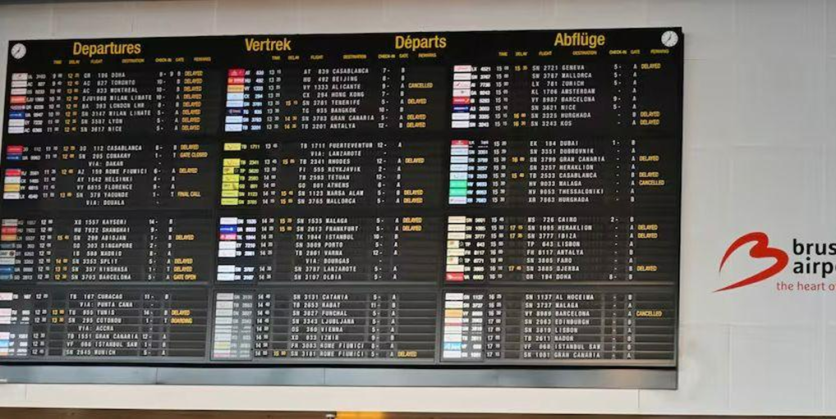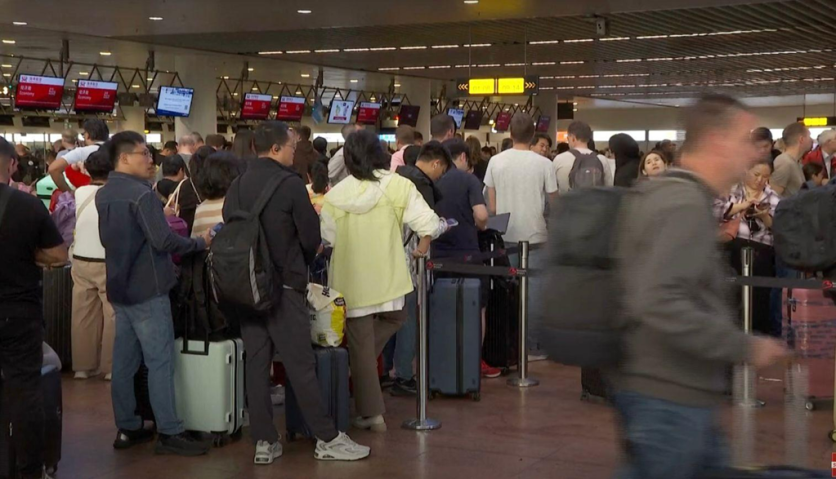The September 19, 2025 ransomware attack on Collins Aerospace's Multi-User System Environment (MUSE) platform brought major European airports to a standstill and confirmed the long-known vulnerabilities. Saswata Dey's Rising Above the Breach: The Future of Cybersecurity predicted how supply-chain integration and architectural consolidation bring systemic weakness.

European Union Agency for Cybersecurity (ENISA) confirmed a third-party ransomware attack halted check-in at Heathrow, Brussels, and Berlin Brandenburg airports, causing handwritten boarding passes and waits of 90-minute delay.
The Predicted Vulnerability
Supply-chain attacks cascade downstream from shared infrastructure, Dey argues; Collins' centralized MUSE made one vendor compromise cascading across multiple airports. "The attack vector is no longer a line—it's a mesh; every attachment point is an opportunity." His book warns that infrastructure today poses dangerous consolidation points. Experts echo this: Rimesh Patel (former Chair, IET Central London Network) urges supply-chain security equal to that of internal controls; Dr. Hisham Al Assam (University of Buckingham) and Prof. Alan Woodward (University of Surrey) note common-use systems boiled down to single points of failure—validating Dey's call for tenancy isolation and good fallback mechanisms.


Leading consultancies also validate these warnings: BCG highlights only about 70 percent of airlines have implemented advanced third-party risk management; McKinsey cautions ecosystem integration reduces control; and Gartner predicts nearly half of organizations will experience software supply-chain breaches by the year-end—speaking to the need for AI-powered security orchestration.
These insights align with evolving mandates: the EU's NIS2 Directive now requires rigorous supply-chain risk analyses, ongoing monitoring, and resilience testing, while the U.S. Cybersecurity and Infrastructure Security Agency (CISA) paces Zero Trust architecture and threat hunting with AI.
The Zero Trust Solution Framework
Dey and other researchers advocate Zero Trust architecture as the critical solution to these systemic vulnerabilities. In the book Rising Above the Breach, the framework is described as "a security approach based on the principle that no user, device, or application is ever blindly trusted, regardless of location." It enforces strict identity verification and continuous authentication for all entities.
Dey argues that Zero Trust implementation would have been able to prevent or significantly minimize the Collins attack through multiple mechanisms:
Continuous Verification: Rather than trusting signed software updates, systems validate each and every interaction. As explained in Dey's research, "Identity, device health, location, behavior, and workload context must be validated prior to granting access."
Micro-Segmentation: Networks are "split into small boxes to contain breaches and prevent side-stepping." This would have confined the Collins breach to one segment rather than affecting overall airport operations.
Assume Breach Design: Systems should be built on the assumption that the attacker has already gained access to the network, maintaining backup systems and isolated critical functions even in active compromises.
AI-Driven & Agentic AI: From Theory to Aviation Practice
In his book, Dey forecast static defenses would be outpaced by adaptive ransomware—exactly what transpired to Collins's MUSE platform. He laid out three AI pillars that now make up the core of an aviation security posture worthy of the future:
Behavioral Analytics: Machine learning algorithms continuously learn baseline telemetry—login patterns, API call patterns, data transfer rates—and tag anomalies in real time. Had this been in place, the novel MUSE encryptor's unusual encrypted exchanges and port‐scanning behaviors would have triggered instant alerts, reducing detection time from hours to seconds.
Adaptive Authentication: Agentic AI applies real-time risk scores to every user and device activity. Anomalous behavior—like out-of-pattern API calls—auto-escalate authentication requirements or quarantine suspicious examples of a service, halting lateral movement before widespread impact.
Predictive Threat Forecasting: Using threat intelligence, dark-web signals, and historical breach analytics, AI can forecast high-risk targets within the MUSE ecosystem—biometric kiosks, baggage API endpoints, or third-party vendor portals. This enables proactive patching, configuration hardening, and mock attack drills, symbolizing Dey's pre-emptive resilience mandate.
Industry trends reflect both the promise and risk of AI. Federated learning architectures will propel secure, cross-airport threat intelligence sharing without compromising raw data, according to IDC. Conversely, Gartner warns that attackers using AI agents will halve by 2027 the time to exploit account exposures—emphasizing that the attackers themselves are also enabled by these tools.
This agentic AI paradigm—continuous adaptation, autonomous response, and predictive foresight—realizes Dey's vision of being ahead of threats rather than chasing them.
Saswata Dey: At the Forefront of the Cyber Resilience Revolution
The Collins Aerospace outage proved that preventing every cyberattack is an unachievable standard - instead, the aviation sector needs to create systems that can function even when breached. Drawing on senior roles at AWS, IBM, and F5 and now serving as TikTok's Risk Control and Security leader, Saswata Dey has made this paradigm shift the core of his work.
Dey emphasizes a resilience model that aviation organizations must embed into their DNA:
- Preparation – Policies, procedures, tooling, and a trained team ready before incidents happen
- Identification – Real-time monitoring to identify malicious activity
- Containment – Isolate infected segments immediately to contain the blast radius
- Eradication – Identify and remove root cause and any hidden footholds
- Recovery – Validation and recovery of normal operations with minimal disruption
- Lessons Learned – Update strategies and practices to strengthen defenses in the future
Leaders echo Dey's call for resilience over reaction: Delta CISO Deborah Wheeler urges a shift from reactive cybersecurity to proactive "safety of the digital self."Aramco CEO Amin Nasser notes attackers need to succeed once, while defenses must be robust always.
Looking forward, the choice is clear: continue optimizing for efficiency at the risk of occasional crises or implement the Zero Trust architectures, AI-driven threat detection, and cross-domain collaboration framework that Dey and his peers advocate to achieve secure, seamless operations in the face of a dangerous digital world. As Dey concludes, "Rising above the breach requires not just better technology, but better strategy, culture, and collaboration"—the very elements required to safeguard the interconnected infrastructure that modern society depends on.
ⓒ 2026 TECHTIMES.com All rights reserved. Do not reproduce without permission.





